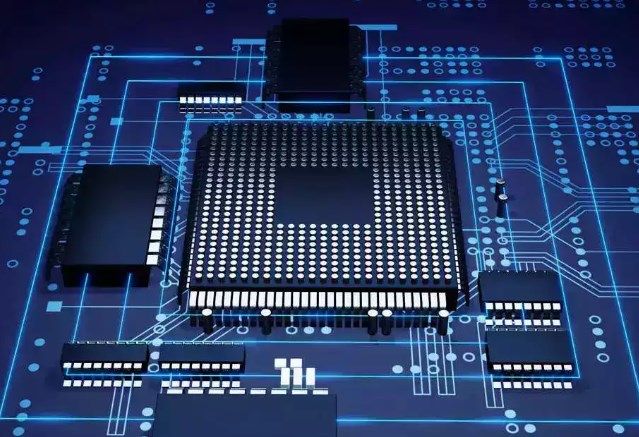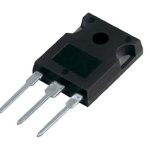To ensure optimal performance and longevity, it is crucial to implement a comprehensive life cycle management strategy. In this article, we will delve into the importance of life cycle management for E-star Trading’s IC chip products, highlighting the benefits it offers to both our customers and our business.
Introduction
Importance of life cycle management in the electronics industry
Life cycle management refers to the process of effectively managing a product throughout its entire life cycle, from its introduction to its eventual obsolescence. It encompasses activities such as product development, market analysis, sales, and product retirement. Effective life cycle management is essential for companies to maximize their profits, sustain customer satisfaction, and stay ahead in a highly competitive market.
E-star Trading
As a leading distributor of IC chip products, E-star Trading has been at the forefront of the electronics industry for over a decade. We specialize in sourcing and distributing high-quality IC chips, meeting the demands of various industries, including telecommunications, automotive, consumer electronics, and more.
Our commitment to delivering exceptional products and services has earned us a reputation as a reliable partner for businesses in need of IC chip solutions. With a focus on customer satisfaction and a deep understanding of the importance of life cycle management, E-star Trading has become a go-to distributor for companies seeking long-term success in the electronics industry.
Understanding Life Cycle Management
Life cycle management
Life cycle management, in the context of IC chip products, involves the strategic planning and execution of activities throughout the product’s life cycle. It starts with the product development stage, where extensive research and development are conducted to bring innovative and reliable IC chip solutions to the market. This is followed by the introduction stage, where the product is launched and marketed to potential customers.
Importance of effective life cycle management
By understanding the different stages of a product’s life cycle, businesses can allocate resources effectively, optimize production processes, and align their marketing strategies to meet changing customer needs. Furthermore, effective life cycle management enables businesses to minimize costs, reduce waste, and maximize profitability. It also ensures that customers receive high-quality products and support throughout the product’s life cycle, enhancing customer satisfaction and loyalty.

Life Cycle Stages of IC Chip Products
Different stages in the life cycle of IC chip products
The life cycle of IC chip products can be broadly categorized into five stages: development, introduction, growth, maturity, and decline.
- During the development stage, extensive research and development activities are carried out to create innovative IC chip solutions.
- The introduction stage marks the product launch, where marketing efforts focus on creating awareness and attracting early adopters.
- As the product gains traction and market acceptance increases, it enters the growth stage, characterized by an exponential increase in sales.
- The maturity stage is reached when sales level off, and the market becomes saturated.
- Finally, the decline stage occurs when the product faces obsolescence due to advancements in technology.
Challenges and opportunities associated with each stage
In the introduction stage: the challenge lies in creating awareness and convincing potential customers of the product’s value. Opportunities arise from being the first to market and establishing a strong brand presence.
In the growth stage: It brings challenges of meeting increasing demand and fending off competition. It also offers opportunities for expanding market share and reaping significant profits.
In the maturity stage: the challenge is to maintain market share and defend against new entrants. However, there are opportunities for diversification and optimization to prolong the product’s life cycle.
In the decline stage: It poses challenges of managing the product’s decline and making plans for a successful exit strategy. However, opportunities can still arise in repurposing the product or transitioning to new technologies.
Strategies employed by E-star Trading for effectively managing each stage
In the introduction stage: we focus on creating a strong brand presence through targeted marketing campaigns and partnering with key stakeholders to build awareness and credibility.
In the growth stage: we bolster our distribution capabilities to meet increasing demand and ensure timely product delivery. To address the challenges in the maturity stage, we emphasize product differentiation, strategic alliances, and market diversification to sustain market share and extend the product’s life cycle.
During the decline stage: we proactively anticipate market trends and explore new technologies, ensuring seamless transitions and maximizing the value of the product.
Through these strategies, E-star Trading aims to effectively manage each stage of the IC chip product life cycle, fostering long-term success for our company and our valued clients.
E-star Trading’s Approach to Life Cycle Management
Strategies
When introducing a new product to the market, E-star Trading implements a thorough market research and analysis process to identify the target audience and determine the most effective marketing strategies. By understanding the specific needs and preferences of customers, we are able to tailor our product offering and promotion to capture their attention and establish a strong foothold in the market.
Methods
As a product begins to grow in demand, E-star Trading focuses on building strong relationships with both suppliers and customers. We actively engage in continuous communication with suppliers to ensure a steady supply of high-quality IC chips products.
Additionally, we work closely with customers to provide personalized support and assistance, actively seeking feedback and implementing any necessary improvements. Our focus on building customer loyalty and satisfaction has enabled us to expand our market reach and grow our customer base.
Techniques
During the maturity stage of a product, E-star Trading uses various techniques to maintain its market position and maximize sales. This includes regular market analysis and staying updated with the latest trends and technologies.
We also continually invest in research and development to enhance our product offerings and meet evolving customer demands. To counter market saturation, we aggressively explore new markets and expand our product portfolio to ensure a diverse range of offerings to our customers.
Measures
Recognizing that product decline is inevitable, E-star Trading takes proactive measures to manage this stage effectively. We closely monitor market trends and customer preferences to identify declining products. In such cases, we swiftly implement inventory management strategies to control stock levels and minimize waste. We also explore alternative markets or repurposing options to extend the life cycle of products, ensuring minimal impact on the environment and maximum value to our customers.
Benefits of Effective Life Cycle Management
Enhanced customer satisfaction
By effectively managing the life cycle of our products, we ensure a continuous supply of high-quality IC chip products to our customers. This guarantees that their needs are consistently met and fosters trust and loyalty towards our brand. Customers can rely on us to provide them with the latest technology and reliable solutions, which ultimately leads to enhanced customer satisfaction and increased customer retention.
Cost savings through optimized inventory management and reduced waste
Efficient life cycle management enables us to optimize our inventory management process. Through accurate forecasting and planning, we can minimize excess stock and reduce the risk of obsolescence. This not only saves costs associated with excess inventory, but also reduces waste and environmental impact. By efficiently managing our inventory, we can allocate resources more effectively and improve overall operational efficiency.
Improved competitiveness and market positioning
By actively managing the life cycle of our products and staying ahead of market trends, E-star Trading maintains a competitive advantage in the industry. Our ability to introduce new products, expand into new markets, and adapt to changing customer needs allows us to position ourselves as a leading distributor of IC chip products. This increased competitiveness strengthens our brand reputation and attracts new customers, ultimately leading to business growth and success.
Challenges and Solutions in Life Cycle Management
Common challenges
While E-star Trading strives to implement effective life cycle management strategies, there are challenges that we encounter. These challenges include rapidly changing technology, unpredictable market trends, and intense competition. We understand that failure to adapt to these challenges can result in reduced market share and decreased profitability.
Elaboration on the strategies
To overcome the challenges faced in life cycle management, E-star Trading adopts several key strategies.
- Firstly, we invest in continuous market research and analysis to anticipate technological advancements and market changes. This allows us to proactively adapt our product portfolio and strategies to stay ahead of the curve.
- Additionally, we collaborate closely with our suppliers and customers, fostering strong relationships and ensuring effective communication. This allows us to gather valuable insights, receive feedback, and make informed decisions to mitigate challenges and sustain our market position.
- Furthermore, our dedicated research and development team keeps us at the forefront of innovation, enabling us to develop new products and technologies that meet evolving customer demands.
By taking a proactive and adaptive approach, E-star Trading successfully navigates the challenges of life cycle management and consistently stays ahead in the industry.

Conclusion
In conclusion, life cycle management is an essential aspect of E-star Trading’s operations as a distributor of IC chip products. By ensuring the effective planning, procurement, inventory management, and eventual disposal of these components, we can offer our customers the highest level of service and product reliability. Moreover, E-star Trading not only enhances our reputation as a trusted distributor but also contributes to a sustainable and environmentally conscious business model.



